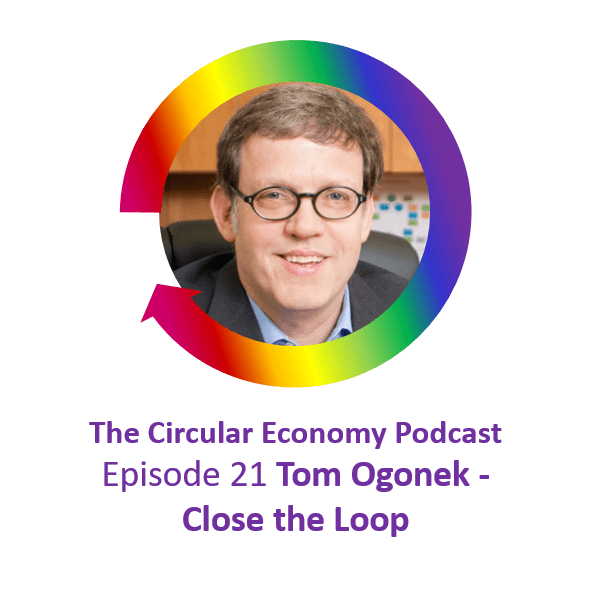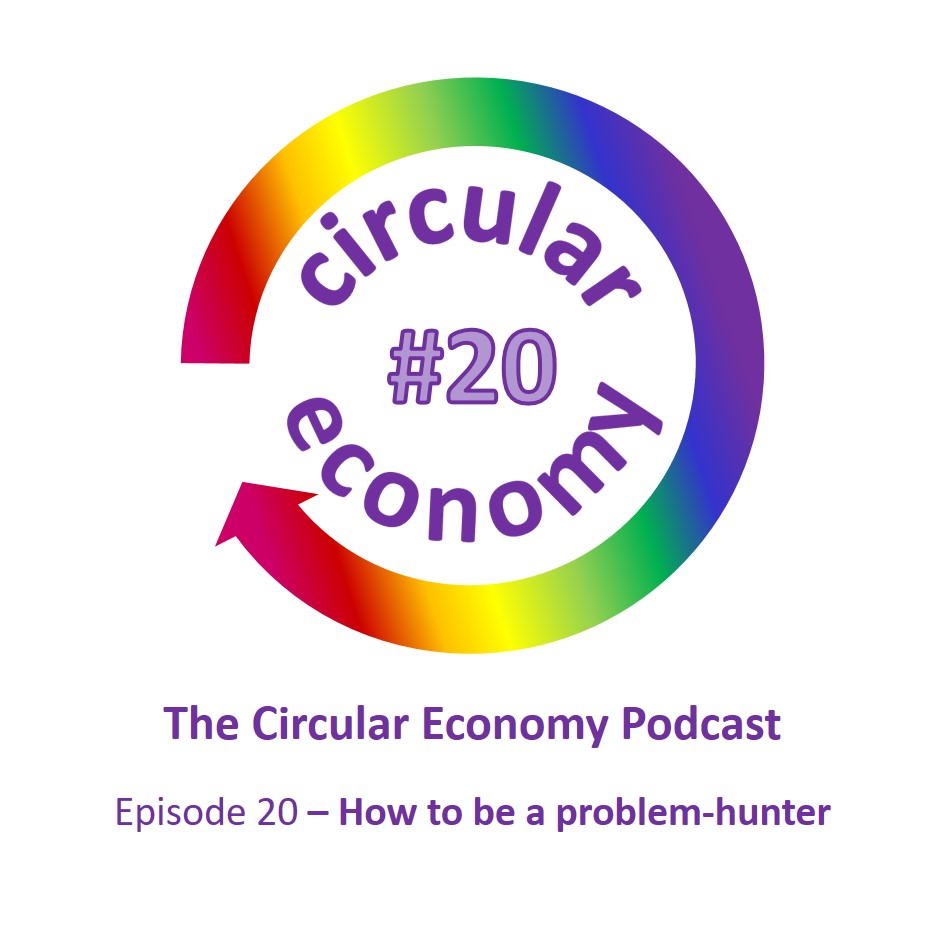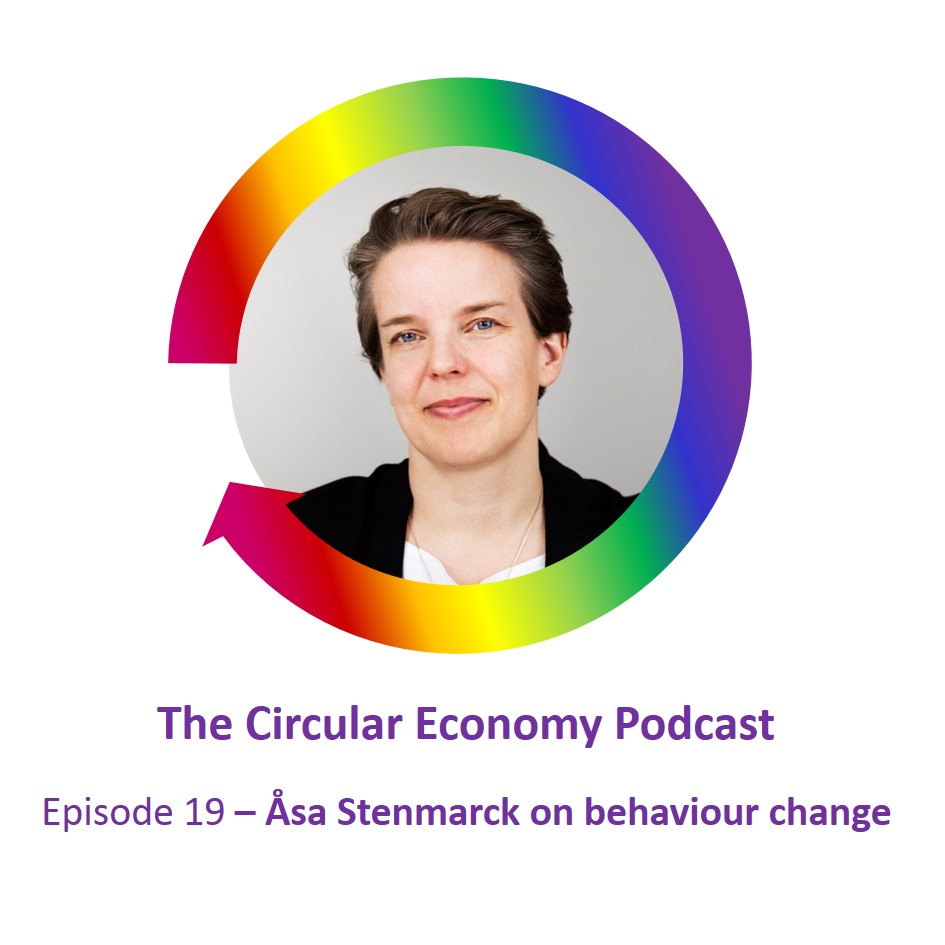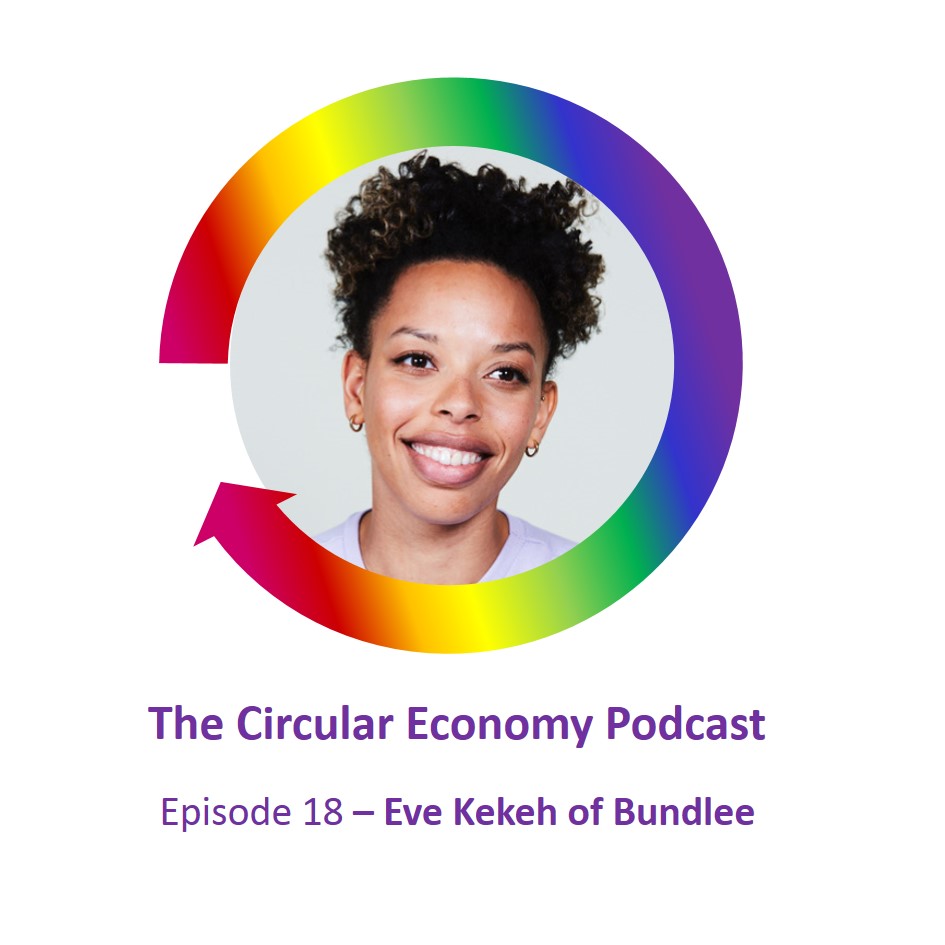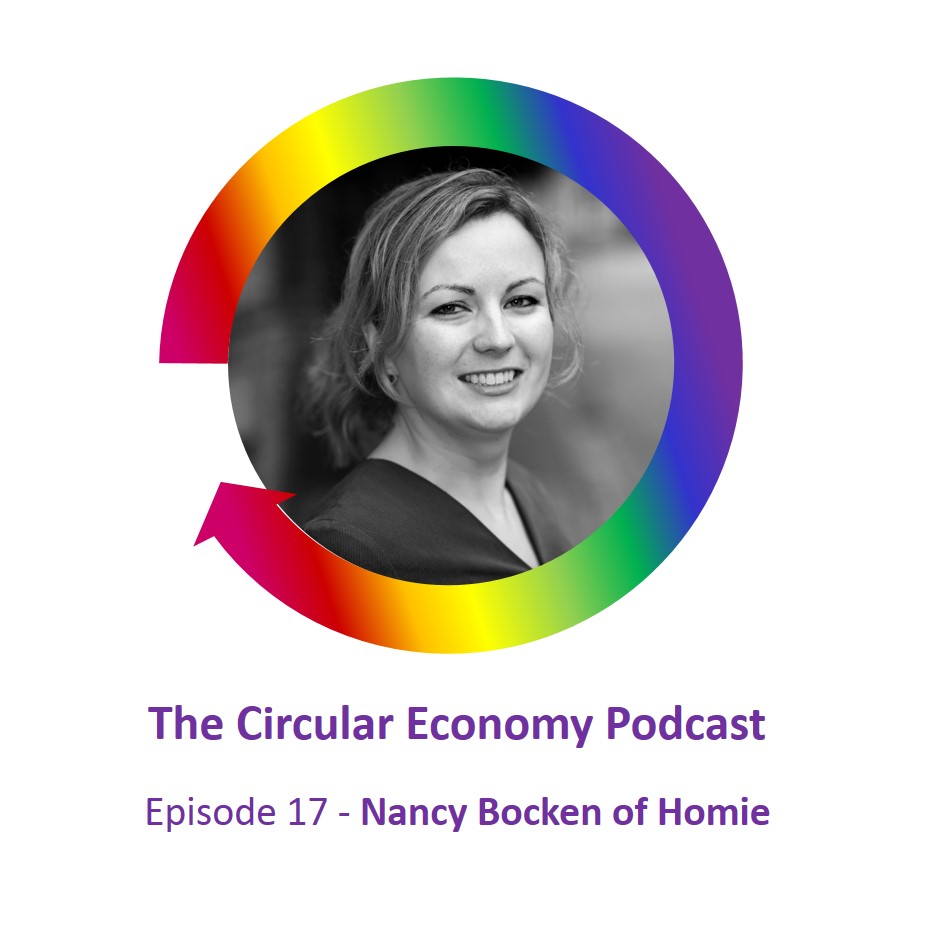Podcast: Play in new window | Download
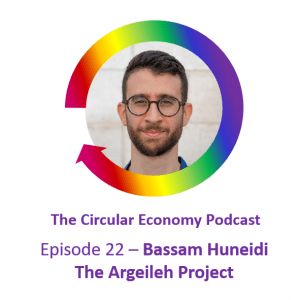 We talk to entrepreneur and designer Bassam Huneidi, about his Argeileh Project.
We talk to entrepreneur and designer Bassam Huneidi, about his Argeileh Project.
Bassam is a circular economy designer and strategist, who helps businesses prepare for the future by designing products, services and strategies that are economically viable and avoid harm to the environment.
Bassam is a graduate of the Royal College of Art and Imperial College London. During his career, Bassam has worked at IBM, and has designed services for Virgin, Google and Barclays. Bassam is also the co-founder of Gutface, aiming to revive food fermentation for the modern lifestyle.
You may not have heard of an Argeileh before…. though you might have heard of a hookah Argeileh is the word used for a hookah in several countries in the Middle East. It is a single- or multi-stemmed instrument for vaporizing and smoking, tobacco, or flavored cannabis and so on. Charcoal is used to create the heat, and the vapor or smoke is passed through a water basin, before inhalation. Sometimes they are used at home, and often at cafes, as a shared experience with friends and neighbours.
Bassam worked out that about 11.5 million single-use plastic hoses are used every year in Jordan alone. Extrapolated to the population of the Arab world, that’s 440 million hoses, every year.
We’ll hear how Bassam plans to disrupt one of the biggest traditions in the Arab world with a zero-waste alternative that is better for the environment, cheaper for suppliers and better for public health, while providing the same experience for the user.
The Argeileh Project (or TAP for short) is a subscription-based service that argeileh cafes sign up to. In return, Bassam’s team take the café’s current stock of argeilehs and melt them down into TAP vapes. These vapes are designed on cradle to cradle principles, so they are easy to maintain, easy to upgrade and in the case where neither is possible, infinitely recyclable.
Podcast host Catherine Weetman is a circular economy business advisor, workshop facilitator, speaker and writer. Her award-winning book, includes lots of practical examples and tips on getting started. Catherine founded Rethink Global in 2013, to help businesses use circular, sustainable approaches to build a better business (and a better world).
Stay in touch for free insights and updates…
Don’t forget, you can subscribe to the podcast series on iTunes, Google Podcasts, PlayerFM, Spotify, TuneIn, or search for “circular economy” in your favourite podcast app. Stay in touch to get free insights and updates, direct to your inbox…
You can also use our interactive, searchable podcast index to find episodes by sector, by region or by circular strategy. Plus, there is now a regular Circular Economy Podcast newsletter, so you get the latest episode show notes and links delivered to your inbox on Sunday morning, each fortnight. The newsletter includes a link to the episode page on our website, with an audio player. You can subscribe by clicking this link to update your preferences.
Links we mention in the episode:
- Catherine’s blog “Who is exploiting the circularity gap in your business?” https://www.rethinkglobal.info/circularity-gap-risk/
- Podcast episodes with circular economy designers:
- Episode 16 – Sophie Thomas of Thomas Matthews https://www.rethinkglobal.info/episode-16-sophie-thomas-of-thomas-matthews-ltd/
- Episode 6 – Adam Fairweather – reimagine waste https://www.rethinkglobal.info/adam-fairweather-reimagine-waste/
- Bassam Huneidi – website https://www.bassamhuneidi.com/ and The Argeileh Project https://www.bassamhuneidi.com/tap-1
- Bassam on LinkedIn https://www.linkedin.com/in/bassamhuneidi/
- Ryan Mario Yasin, founder of PetitPli www.petitpli.com
About Bassam Huneidi
 Bassam is a circular economy designer and strategist. He helps businesses to prepare for the future by designing products, services and strategies that are economically viable and avoid harm to the environment.
Bassam is a circular economy designer and strategist. He helps businesses to prepare for the future by designing products, services and strategies that are economically viable and avoid harm to the environment.
A graduate of the Royal College of Art and Imperial College London (MA/MSc), his main areas of focus are food sustainability and the circular economy. During his career, Bassam has worked at IBM, AKQA (designing futures focused services for Virgin, Google and Barclays) and Twelve Degrees where he led the design and development of ‘Made From Jordan.’ Bassam is also the co-founder of Gutface, a company that creates products to accelerate the adoption of food fermentation at a consumer level.
He has given numerous workshops and talks on design and sustainability in Australia, the UK and Jordan.
What we talk about (transcript)
Catherine (00:59):
It’s episode 22 and I’m recording this on the 28th of February. In the last episode we heard about Close the Loop, a business helping manufacturers close their circularity gaps and my latest blog examines the downsides of leaving that gap open so other companies can exploit it to create value. In today’s episode, I’m talking to entrepreneur and designer Bassam Huneidi about his Argeileh project. Bassam is a circular economy designer and strategist who helps businesses prepare for the future by designing products, services, and strategies that are both economically viable and avoid harming the environment. Bassam is a graduate of the Royal College of Arts and Imperial College London. During his career, Bassam worked at IBM and as designed services for Virgin, Google and Barclays. Bassam is also the cofounder of Gutface, aiming to revive food fermentation for the modern lifestyle.
Like me, you may not have heard of Argeileh before, though you might have heard of a hookah. That’s H double O. K a h. Argeileh is a word used for a hookah in several countries in the middle East. It’s a single or multi-stemmed instrument for vaporizing and smoking tobacco or flavored cannabis and so on. Charcoals used to create the heat and the vapor or smoke is passed through a water basin before inhalation.
Sometimes they are used at home and often at cafes as a shared experience with friends and neighbors. Basaam worked out that’s around 11 and a half million single use. Plastic hoses are used every year in Jordan alone, extrapolated to the population of the Arab world. That’s 440 million hoses every year.
We’ll hear how Bassam plans to disrupt one of the biggest traditions in the Arab world with a zero waste alternative that’s better for the environment, cheaper for suppliers, and better for public health while providing the same experience for the user. The Argeileh project, or TAP for short, is a subscription based service that Argeileh cafes sign up to. In return Bassam’s team, take the cafe’s current stock of Argeileh and melt them down into TAP vapes. These vapes are designed on cradle to cradle principles, so they’re easy to maintain, easy to upgrade. And in the case where neither is possible, infinitely recyclable. Let’s talk to Bassam Huneidi. So Bassam, welcome to the circular economy podcast.
Bassam Huneidi (03:48):
Thanks for having me.
Catherine (03:49):
It’s a pleasure. And where are you calling in from today?
Bassam Huneidi (03:53):
I’m calling from Oman in Jordan.
Catherine (03:58):
So I’m curious about your background cause you’ve done quite a lot of things before doing this startup. So before we talk about the Argeileh project, maybe you can tell us a little bit about your background.
Bassam Huneidi (04:11):
Sure. so I started out as a mechanical engineer in Australia and I worked in a bunch of fields. I think one of the most ironic was working on a very big oil and gas project in Australia. And then you know, I decided I wanted to do things which are more environmentally conscious. And I particularly was very, very interested in design because as engineers I think we always focus on the solution and not particularly the problem. And having known a lot of designers and worked in an internship and a product designed for him, I realized that design really focuses on people and specifically what people’s needs are. So I went to pursue a design at the Royal College of Art in London, which was a very, very life changing experience. And yeah, from there I’ve just realized that I’m very, very passionate about environmental problems specifically the circular economy as well. And I’ve just been working on several projects related to that and food sustainability
Catherine (05:28):
And food sustainability. Yeah, yeah. There’s some, I noticed some stuff about that on your website. So you’ve worked for a number of big companies and now your doing a startup with a few projects, one of which is the Argeileh project. So maybe you can tell us a little bit more about that.
Bassam Huneidi (05:50):
Yeah. so again, I can maybe talk a bit about Argeileh itself. Argeileh is a very, very old product which is used very frequently in the middle East. It’s very similar to I would have a pub or a bar in, in Europe people here because of, you know, Islam, alcohol is seen as a sin. Most people turn towards smoking, socialized and they go to a cafe. And in this cafe you get served as Argeileh apparatus, which is essentially a water pipe with tobacco on the top and uses charcoal as fuel. And yeah, so people would sit around the table, they play cards, they’d drink tea or juice and socialize around this, ideally. Sometimes people would have one for themselves. Sometimes people would, would share. And there’s so many of them around the Arab world.
Catherine (06:51):
Right. I didn’t realize it was a, it could be a sharing thing as well. Is that, is that something that’s stayed a common over time or, you know, is it something that they used to always be a shared one and now some, some people still do and other people choose to have their own? Has that changed at all?
Bassam Huneidi (07:11):
No, I think it’s always been I mean both have existed together. Because I mean, I know a lot of people who will just have one on their own, but there’s other people who do it, I think more socially and not very frequently they would usually share. Yeah, especially because there’s a lot of studies that have been done about Argeileh and it’s there’s a lot of evidence suggests that one hole at a gala is like smoking an entire packet of cigarettes, the same effect. So a lot of people do prefer to share.
Catherine (07:47):
Mm. Wow. That’s, that’s a lots of tobacco. Yeah. So what first got you interested in trying to come up with a circular economy solution to Argeileh?
Bassam Huneidi (07:59):
It started out actually me and my brother in law. We were in one of these cafes one day and he posed the question to me which was how many, so they used to be these hoses that they would use, which weren’t made of plastic. They were made of they had some plastic in them, what they were made of, a kind of canvas and wood that would, people would smoke. But then these new regulations came out the Arab world, that it wasn’t safe to use them because of a potential tuberculosis contamination and other diseases. So they moved towards single use plastic hoses and he posed the question, which was, how many do you think are used every day? In Jordan? And that question really consumed me because you know, I, this was at the peak of the whole plastic problem, which I think we’re still kind of at that peak.
Bassam Huneidi (08:54):
And I had just gotten a National Geographic copy, which was about plastic waste. And I started to calculate, I guess, and I looked at how many Argeileh cafes there are in Jordan alone. And then I went to a local one and I asked him to give me all the pipes that they use within a month. So they just collected them for me. And every week I’d go and I’d take a bag. So in one month, and this is a relatively quiet cafe, so there’s some which are far, far busier than the one that I was asking for. So I collected about 1,300 pipes on this space and only one month, and that’s quite a conservative number. And then I expanded it to the number of cafes which I got from government websites. So they have statistics of how many registered cafes there are. Not to mention there are a lot of unregistered cafes and a lot of informal kind of cafes in Jordan. So the number that I got, and this is a conservative number, was about 11 and a half million per year.
Catherine (10:04):
Wow.
Bassam Huneidi (10:05):
Yeah. Which is a crazy number. No one’s really talking about it. Or I don’t think anyone’s ever studied the size of this problem before. And Jordan’s population compared to the rest of the Arab world is quite small. The Arab world’s population is close to 400 million. Jordan’s is only nine. So if we extrapolate that to the population of the Arab world, we’re looking at close to 440 million hypes per year, which is enough to wrap around the earth 16 and a half times.
Catherine (10:37):
Wow. That’s amazing. Yeah. And that’s, and that’s probably still being conservative given your starting points of registered cafes and small, low, low usage cafe. So if you’d come to a number and then you know, what next in terms of your curiosity with the problem.
Bassam Huneidi (10:58):
So at the first stop point was, okay, let’s do a you know, a plastic alternative, something that was biodegradable that anyone could use. You didn’t have to worry about throwing it away. But as I dug deeper into the good industry, there’s two other things which kind of bothered me. And that’s the amount of tobacco and the amount of charcoal that are used. And the charcoal industry, a lot of it comes from Egypt and it’s very, very dangerous. It’s unregulated. There aren’t many health regulations in Egypt concerning chocolate production. And especially within the cafes. I mean, you want to go to these cafes, sometimes you, it’s the only way to socialize with friends, but you enter in, it’s like entering a fog. It’s all secondhand smoke and it’s not safe, you know, for the general public. So at first I started looking at alternatives to plastic, but then as I, as I started to look into it, I felt like nothing would be cheaper than these pipes because these pipes are already at around a five pence equivalent in the UK money. So anything that I would have had to make would had to be cheaper than that.
Catherine (12:16):
Yeah.
Bassam Huneidi (12:17):
So that’s when I really got to the circular economy idea of it. And especially subscription-based models. And since vaping is already, it’s a technology that exists it’s kind of made sense to me. But the problem was that vapes are still quite expensive. You know, they would never replace the price of an Argeileh pipe. So I asked a few cafes to give me their monthly costs and I was able to find out that on average it costs cafes around 1,300 JDS per month every month just to restock their Argeileh. This isn’t including the cost of the Argeileh pipes themselves, which could range between 10 to 60 JDS each.
Catherine (13:02):
Right. So that, so that, so the cost of 1300 a month is that just to provide the tobacco and the charcoal,
Bassam Huneidi (13:10):
The tobacco, the charcoal and the plastic hoses.
Catherine (13:13):
The single use hoses. Yeah. Okay. Exactly. Yeah. Yeah.
Bassam Huneidi (13:18):
So at that point I saw the opportunity if, you know, you make a vape and it costs about 30 to 40 JDS to produce. But if it was a subscription based model and all you had to re refresh every month was juice or the vape, it would be a lot cheaper. So that’s when it started to really come together for me. And I calculated that we could bring down their monthly costs from 1,300 per month, 900. And that way we’re not just eliminating the plastic single use pipes, but at the same time we’re also eliminating the tobacco or eliminating the charcoal. So
Catherine (14:02):
So how do you, how do you eliminate the tobacco then?
Bassam Huneidi (14:06):
Because the, the juice itself is a glycerin and flavorings and sometimes there’s also nicotine added to it
Catherine (14:14):
And I didn’t understand that. So, so your transforming what they’re smoking as well as the way that they’re smoking it. So, yeah. So you’re focusing on the need for the social shared experience, but vastly improving, you know, the, the health as well as the environmental impacts.
Bassam Huneidi (14:36):
Yeah. I mean with the health thing, there’s a lot of, there still hasn’t been very like empirical evidence whether vaping is actually safer for smokers or not. But it’s definitely better for secondhand smokers and it doesn’t leave that kind of fog that you would find in a cafe now, which is also mixed with carbon monoxide from the burning of the charcoal. So at least for people who want to be around this cultural phenomenon, it’s, it’s, it’s safer for them without them having to be a dozen having to smoke, you know, or, or inhale the secondhand smoke.
Catherine (15:15):
Yeah. And I think people are becoming much more aware of the dangers of air pollution and particulates. And I know there’s a lot of research about the harmful effects of using you know, biomass cooking stoves things like that and the house where you end up just with those tiny PM 2.5 particulates and all the other effects of smoke. So I guess people are becoming gradually more aware. And if you’re not, if you’re not smoking yourself, then you’re even more aware, aren’t you, of you know, do I want to go in this cafe that’s, that’s full of full of smoke or shall I go in the one next door that’s cleaner because everybody’s inhaling this, this juice products since that.
Bassam Huneidi (16:01):
Yeah, exactly. I think the most interesting thing that I found was, you know, I was like, okay, this is easy. I’ll just buy a bunch of vapes. I’ll go to a restaurant and I’ll tell them, look, here’s, here’s a solution for you. But a lot of consumers weren’t interested. I mean, they looked at a vape and for them it was a cigarette replacement, not an educator replacement. So we redesigned the Argeileh to be a larger and to look like a traditional one. So if you see on the website, it has a lot of, it’s very, very like traditional in its design. And when, when we did it in that way, a lot of smokers started to realize, okay, yeah, this is a replacement for the Argeileh and not just for cigarettes. And they saw it as a completely different product, which I thought was very, very fascinating. Part of the research.
Catherine (16:56):
Yeah. And I guess that’s all comes into things about emotional attachment and emotional durability that even though something might be functional functionally the same, if it doesn’t fit part of the culture and, and fit into this, you know, kind of historic and important tradition just because of the way it looks, then it’s going to be hard to convince people that, you know, this is what they should do. You would be seen as more of a innovator or early adopter where, you know, people, people tend to like to stay the same, don’t then you know, not, not turn the world upside down. It’s absolutely true. Yeah. So were you testing this out, you know, did you have prototype? We just showing people photos? How were you helping people understand what the new product was and how it would work and so on?
Bassam Huneidi (17:58):
So at first I saw, I tried to start with the vapes themselves. But then when I found that there wasn’t much interest, I redesigned, I did like a package. And then I just took apart a part a Vape and I put it in that new package, which looked more like a traditional Argeileh. And that’s what I started to realize that there was a lot more interest, especially the size because the pipes that you hold are quite large and you want to feel like it’s hefty, not like something that’s really small and dainty. And that made quite a big difference with cafes. I found that they’re very slow to accept. And I think mainly because they’re very, it’s very steeped in tradition. The whole idea of the Argeileh and there are some which are like some cafes which are younger or their owners are younger and they’re more you enter and you see that the core is more modern and more contemporary. They were far more likely to be like, okay, I’d definitely like to try a few as like a trial run. Whereas the older and more traditional cafes who have, who’s specifically been around for quite a while were very against idea. Like, no, people would not want this. And even when I showed them the research, and this was quite true, that, especially the older generations you know, like people who are around 45 and older, we’re not in on, on a change in what they consider to be, you know, a cultural habit. But the younger generations were far more interested, especially people who had just graduated university, they’d come back to Jordan or live in Jordan. They, a lot of them already vaped to replace smoking. So for them, they see it as just a natural evolution of the Argeileh.
Catherine (19:59):
Mmm. Yeah. And so how, how did you then progressed to persuading the older generation that it was something that, you know, was, was a good transition away from the traditional one?
Bassam Huneidi (20:19):
I think I just realized that there was no point trying to convince. I think w we just found our target market, which was you know, younger smokers, especially ones because a lot of the reason why people vape is because they want to continue to be able to socialize with their friends because smoking is a very, very popular as time in, in the Arab world. And a lot of them moved to vaping because they understand the health risks associated with traditional cigarettes. So we figured, you know, if a lot of people, these people are going to cafes but they’re picking up Argeileh anyway you know, why not turn that into a healthier alternative for them as well.
Catherine (21:04):
Mmm. Yeah. I think you’re right and finding who you know, who your early, early adopters are is quite an important step, isn’t it? To work out, you know, who’s, who’s most likely to accept this and how do I get to, to have conversations with them and you know, find out where, where they go and which cafes, the frequency and so on. Because you can, you know, you can expand out from there, but if you don’t find your early adopter tribe, then you’re a bit stuck, aren’t you, however good the idea is. Yeah, absolutely. Yeah. So I’m curious to know where you’re up to now with the project.
Bassam Huneidi (21:48):
So right now a lot of investors always require there to be a co founder. And I think especially for me, I’m far more, I’m very good at like the design in the making of things. So I’m looking for a co founder who is particularly savvy at the business side of things. So that’s where I am right now. And I think we need to do, I think there’s a very big opportunity to look at launching, not in Jordan but in a place more like Dubai or Saudi Arabia because they’re far more progressive when it comes to innovation and adopting new technologies. And Jordan is, and especially the market there as far as far larger.
Catherine (22:33):
Right. And I guess slightly more international. You know, Dubai, Dubai particularly is really trying to encourage tourists, isn’t that who our guests might be might be more put off by going into a cafe that’s full of smoke and so on. I guess those early adopter cafes that are providing the cleaner atmosphere will be the ones that will attract the, the younger generation and the tourists and feel perhaps slightly more cosmopolitan.
Bassam Huneidi (23:07):
Yeah. And I really do believe that once people see how much of a change it makes, that more cafes will be willing to adopt. Especially cause you know, you’re sitting in a cafe and because you know, it needs constantly needs chocolate to be put on the top, the traditional Argeileh for it to keep running. You have these guys walking around, they truly link like swinging buckets of burning charcoal right in the middle of this cafe. And sometimes it’s, it’s a, it’s a health hazard because sometimes you have you see when you sit down on some of the furniture, you always find like burn marks cause some stuff falls. Sometimes. There’s definitely been cases where, you know, two tables are very close to each other and somebody might move their chair. It’s someone else’s Argeileh and a coal would fall on someone. So it’s also these small things which, which I think we kind of take for granted maybe.
Catherine (24:07):
Yeah. But it doesn’t take very long, does it for people to, to see a better way of doing it. And that’s an, you know, another kind of benefit for the cafe owners and so on, isn’t it? Less damage to furniture and less risk of claims from customers who ended up being burnt by a stray bit of charcoal. Right. Exactly. So through your journey so far, what’s, what’s, what’s been your big lesson learned, lessons learned that you’d like to share as a top tip for any, anybody who’s thinking about starting a circular economy business or making their business more circular, what’s the, the number one tip that you’d share with them?
Bassam Huneidi (24:51):
I think the interesting thing specifically for the Arab world is that people don’t necessarily care about sustainability. So when I first went up and I was telling you about all the, there’s this problem of plastic pipes, we need to, we need to get rid of it. Most people just like, honestly I don’t care. But once you go to cafes and you show them how, okay, this economically makes more sense to you. That’s what I think it starts to make a lot more sense to people. And I think that’s why the circular economy is so interesting compared to most sustainability projects or ideas is that it’s, it looks at the economic sense before it looks at sustainability for a lot of people. That makes more sense. Right? And if we can do something that they can, they can make sense for my business at the same time, it’s good for the environment. I’m all down for it.
Catherine (25:48):
Yes, I agree. I think it’s all about the business case, the business case, not just for whoever’s funding the product or service, but the business case for the end user as well. And maybe for wider society. So if we think about the, Argeileh then it’s making a business case for the customers of the cafe, some of whom would be using the Argeileh, some of whom would just be sitting there but enjoying the cleaner environment. So kind of as well as just the direct costs of the, of the equipment. If the cafe owners able to attract more people because you know, suddenly he’s got a nicer and nicer place to sit and chat. Then that’s a win win for him. But it’s also a win win for the customers who want to come in and enjoy a cleaner, healthier atmosphere. Yeah. Yeah. And I think, yeah, sorry. No, no, go on.
Bassam Huneidi (26:51):
Cause there’s one thing he was talking, I think I forgot to mention, which I think is an important part of the project is that the idea is, for, if somebody, if a cafe was to sign up to the Argeileh project is rather than them disposing of their traditional Argeileh pipes which are made of these valuable metals usually aluminium stainless steel, or brass and glass. The, that is that we take them and remanufacture them into these TAP vapes just to really push the circular economy idea home.
Catherine (27:27):
Oh, that’s, yeah, that’s a great idea. And that gives them a really good story to tell about how they’ve contributed to reducing waste and pollution and so on as well. And yeah, so is that difficult to do or is it relatively easy to do the remanufacturing?
Bassam Huneidi (27:46):
It’s difficult in the sense that there isn’t a very strong consumer product manufacturing scene within the Arab world. So that’s something that we’re also, right now, one of our main challenges is to find a partner that we can work with regionally, that kind of manufacturer rather than, you know, sending all of these items to China, getting them we manufactured and sent back. It would make more sense I think there you can definitely find those people. It’s just, you know, not everything is online unfortunately in the middle East.
Catherine (28:26):
Yeah. And I guess as the circular economy is growing, I think there are more specialists setting up to both recycle difficult materials and make them into other components. And so on a complete, the companies are starting to see that as a real opportunity.
Bassam Huneidi (28:43):
Absolutely. And theoretically it’s, you know, it’s a, it makes a lot of sense. And there’s a lot of producers and factors that work with recycled materials in the Arab world, except, you know, a lot of them don’t make consumer products. They make you know, large sheets of material. So it’s kind of just trying to find that one manufacturer who would be able to make a mold and small scale items.
Catherine (29:12):
Yeah. Or I’ll find some industrial products that wouldn’t be down cycling so that you still getting plenty of value out of the, out of the product. Yeah.
Bassam Huneidi (29:23):
So I think something else that I would, or another tidbit I would give to someone trying to launch circular economy business is that the circular economy should take the burden of the product and life cycle or the end of life from the consumer to the creator of the, so if you’re starting a certain quality business, you should be thinking about where your product’s going to end before you even launch it. And that should be part of the entire business model and business plan. Otherwise it just wouldn’t make sense to be a circular economy business.
Catherine (30:00):
Yeah, that’s really interesting thought and kind of plays into some of the criticisms of the circular economy because I’ve been looking at some of the businesses that, you know, if you think about Uber, that’s a kind of circular economy model because it’s all about getting more intensive use out of the, out of the car. But actually it’s not very ethical. And in lots of American cities, they found that it’s pricing out the competition of public transport. So it’s actually adding to car miles in the city. So I think having, having the mindset of what happens to my service, you know, what if it’s a physical product, what happens at the end of the life? Or if it’s a, a service that you’re offering, thinking about where it fits in the system and what, what some of the consequences are. You know, if I put this into the market, am I going to take responsibility for getting it back?
Catherine (30:55):
And if I do, how am I going to deal with it is as critical, isn’t it? And if I’m, if I’m offering this service what are the impacts might it have and am I taking responsibility for all my externalities? Yeah. So I think you’re right and that, you know, having that in mind at the beginning of the journey saves you from suffering from policies and, and taxes and, and legislation that might come in later to later down the road. Yeah, that’s exactly true. Yeah. Great stuff. So bass in the research and so on that you’ve been doing so far. And in the, in the interest that you’ve had in the circular economy, do you have a favorite example that you’d like to tell people when you’re explaining the circular economy? And maybe that would be somebody we could interview for the podcast in the future?
Bassam Huneidi (31:52):
Yeah, there’s actually one that came to mind right away when you mentioned that he’s a friend of mine who we studied, we studied together. His name is Ryan Yasin, and he, I don’t know if you’ve heard of the company Petit Pli.
Catherine
Yes. Yeah.
Bassam Huneidi
So yeah, so they make clothes for babies, which expand over time so that you’re not constantly buying a new new clothes for your children between the ages of three months and two years, I believe, three years. And yeah, I just think it’s such a great, great idea and an excellent way to look at redesigning things in a way that allows them to make more economical sense. But at the same time, you know, it looks beautiful. It’s, it works really, really well.
Catherine (32:47):
Yes. I used it as an example in the second edition of my book, which is due out in the, in the summer. And I seem to remember it was inspired by a couple of things including origami and the kind of folding of that was a starting point for the designs. So yeah, that’d be great. I’ll, I’ll see if I can get your his details from you after the, after the call. So Bassam, how can people find out more about the Argeileh project and get in touch with you?
Bassam Huneidi (33:19):
So everything’s on my website at the moment which is bassamhuneidi dot com. And you can also find me on Instagram at Bas Huneidi. Yeah. And all the information will be there for the time being, until you know, we, we move it to a new website.
Catherine (33:43):
Yeah. So you get finally launched as a, as a an up and running company. So we’ll put, we’ll put those links in the show notes so that people can find them and find out more. And hopefully somebody listening will either want to be a cofounder or know somebody who might be interested and or have ideas about the repurposing locally instead of having to send it overseas to be repurposed. Yeah. So yeah, fingers, fingers crossed for that. So Bassam thanks very much for sharing your story with us and I wish you the best of look for the next stage of the project and I’m sure with your engineering background and, and curiosity about how to investigate and solve the problems for you know, for, for the, the user themselves. Then I’m sure you’ll go far and come up with lots of other ideas and maybe we’ll be back in touch in a couple of years to see how you’ve got on and see what you’re inventing next.
Bassam Huneidi (34:48):
Thank you so much Catherine, and it’s honestly been an absolute pleasure to be on your podcast.
Catherine (34:54):
Great stuff. Thanks Bassam.
Bassam Huneidi (34:56):
Thank you so much.
Catherine (34:58):
What I like about Bassam’s project is the way he’s really thought about how to provide multiple benefits for both groups of customers. The cafe owners and the Argeileh users for the subscriber, the cafe owner, they get a design that doesn’t use charcoal reducing smoke and the risk of fire or accidents from the charcoal being passed around. The new design uses materials from existing equipment but uses less of each material. They can be repaired, refurbished, and eventually recycled and they cost around 30% less for user. The new design still looks very traditional. It’s avoids the health risks of all the secondhand smoke and non-tobacco flavors can be used instead, which appeals to the younger generation. You get the important social activity without the health downsides. Have a look at Bassam Huneidi’s website to find out more
Want to find out more about the circular economy?
If you’d like to learn more about the circular economy and how it could help your business, why not listen to Episode 1, or read our guide: What is the Circular Economy?
To go deeper, you could buy Catherine’s book, A Circular Economy Handbook for Business and Supply Chains This comprehensive guide uses a bottom-up, practical approach. It includes lots of real examples from around the world, to help you really ‘get’ the circular economy. Even better, you’ll be inspired with ideas to make your own business more competitive, resilient and sustainable.
Please let us know what you think of the podcast – and we’d love it if you could leave us a review on iTunes, or wherever you find your podcasts. Or send us a Tweet: @Rethink _Global.
Podcast music
Thanks to Belinda O’Hooley and Heidi Tidow, otherwise known as the brilliant, inventive and generous folk duo, O’Hooley & Tidow for allowing me to use the instrumentals from the live version of Summat’s Brewin’ as music for the podcast. You can find the whole track (inspired by the Copper Family song “Oh Good Ale”) on their album, also called Summat’s Brewin’. Or, follow them on Twitter.
